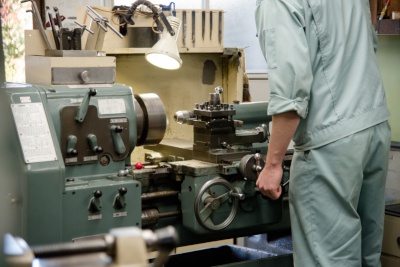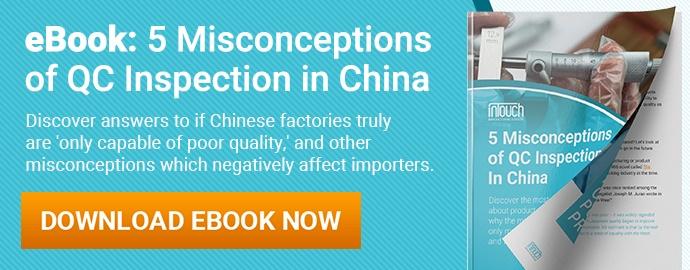Best In Manufacturing – July 8, 2018
Each Sunday, we publish a list of top articles and other content related to manufacturing in areas like quality control, product development, supply chain management, sourcing, auditing and law.
1.China dominates the World Cup—in manufacturing FIFA souvenirs
The FIFA World Cup is the world’s most watched sporting event. FIFA estimates their viewing audience to be 3.2 billion people, nearly half of the global population. And with so many fans comes a high demand for products and souvenirs—a demand that is fulfilled by Chinese manufacturers.
The scale of the World Cup games means souvenir orders will likely be in the millions. And quality standards tend to be high. FIFA puts factories through a rigorous test before allowing them to manufacture FIFA merchandise. Their inspectors will check areas like human rights, company regulations and technology before granting FIFA authorization.
FIFA authorization goes beyond a single order. For Chinese companies, this authorization gives them international recognition and increases the value of their brand. So they are all scrambling to receive this stamp of approval.
How Chinese companies are meeting FIFA’s demands
Chinese manufacturers are adopting various techniques to show their dedication to FIFA orders. Weiguang Corporation, a company in China’s Guangdong province, has been producing souvenirs for the past seven World Cups. They are valued for their innovation—something as simple as redesigning a trophy from having a square base to a circular base goes a long way in making each World Cup unique.
Beibei Toy Factory from Dongguan dropped everything to take on an express FIFA order. By halting all other production and pulling together more than 800 workers, they produced one million miniature mascots and another 100 two-meter-tall mascots in a single month. All the while meeting FIFA’s quality standards.
Another company upgraded their entire factory to prepare for FIFA orders. They invested in their production line by purchasing over one million yuan worth of machinery. This reduced the number of people on the production line from seven to two, and allowed them to focus on other things like design and sales.
All companies involved in the production of FIFA World Cup are adapting their manufacturing to meet a single client’s quality demands and time constraints.
Read the full article in the link below to learn more about China’s production of FIFA products:
Chinese-made souvenirs dominate World Cup with high quality and innovative design - Southern Metropolis Daily, Global Times
2. Understanding your shipping terms could save you money
Shipping terms and insurance contracts might not seem like the most riveting topics. As an importer, these may be some of the least exciting details you have to address and not ones that you spend a lot of time pondering. But you should care and here’s why.
Most transport contracts contain loopholes that could very well leave your products uninsured for parts of their journey. The 2015 explosion in China’s northern Tianjin Port resulted in supply chain losses of an estimated 9 billion USD. How much of this damage was covered by insurance?
A lot can go wrong in the time between your product leaving the factory and arriving at your warehouse. A truck could get in an accident. A container could be stolen while it waits at the port. A ship could sink as it travels across the Pacific Ocean. These may seem like rare occurrences, but they do happen. And your contracts should protect you from bearing their cost.
Which shipping terms incur the least risk
Most foreign companies use what’s called a Free on Board (FOB) Incoterm when purchasing products from China. Incoterms are internationally recognized commercial terms, and a FOB Incoterm insures a product once it has boarded a ship.
The key distinction here is the last part—once it has boarded a ship. This means your product isn’t insured on the journey from the factory to the ship. Who covers the risk of that journey? Usually, your manufacturer. But they typically cut costs by not purchasing insurance for this journey, leaving your products at risk.
Avoid this by opting for Free Carrier (FCA) terms. FCA passes the risk of loss onto the transporter the second the carrier assumes custody of the shipment—just as it leaves the factory.
Whether you have FOB or FCA terms, understanding your agreement is essential to knowing your level of risk. Disasters of a massive scale like the one in Tianjin are rare. But plenty of more common problems can occur that impact your shipments. And you don’t want to be caught paying damages simply because you didn’t take the time to clearly understand your shipping terms.
For more details on shipping terms in China, read the article below:
China shipping terms: ignorance is NOT bliss - Dan Harris, China Law Blog
3. Why middle market manufacturers might be the solution
Many of us have heard the pros and cons of big and small manufacturers. Big manufacturers typically have greater access to capital, more advanced technology and more relationships. Small manufacturers tend to be quicker to respond to consumer demands. But what we haven’t heard much about are the middle market manufacturers.
Mid-sized manufacturers might just be the perfect “goldilocks” solution. They are seeing continual growth in revenue and employment, as well as innovation and design. Their revenue ranges from 10 million to 1 billion USD, and they’re capturing more of the market.
As competitive pressure has grown over the last five years, customers prioritize speed. But speed is not just the time it takes to produce a product. It includes delivery time as well, which involves the entire supply chain. And according to a report from the National Center for the Middle Market, mid-sized manufacturers are focusing on exactly that.
How mid-manufacturers are improving their business
The report also notes that middle market manufacturers are focusing their technology investments on a few key areas. A majority of those investments are spread across four specific improvements:
- Cybersecurity (18 percent)
- New materials (19 percent)
- Advanced process control (18 percent); and
- Robotics (19 percent).
These four areas represent some of the top concerns in manufacturing today. They are the important, value-added services that set one manufacturer apart from another. And they are exactly what middle market manufacturers are targeting.
Though investments and advancements are plentiful, mid-market companies are facing the same biggest challenge as their large and small competitors: talent. Specialized experts who can handle technology are hard to find, and attracting people to the industry is even harder. It’s known as the skills gap, and it’s been threatening the industry since the beginnings of advanced automation.
Read more about the rise of middle market manufacturers in the article from the link below:
Manufacturing in the middle: growth, opportunity and new markets - Eric Ehlers, Cisco Blogs
4. IP theft: who’s your leak and how do you stop them
Last January Beijing’s Sinovel Wind Group was convicted of intellectual property (IP) theft. They were caught paying an employee of American Superconductor $1.7 million to steal source code, resulting in the American company losing over $800 million.
IP theft can be as quick and simple as a single email, but its effects are often major. The leaks in these cases are usually insiders—company employees and contractor with access to valuable information and little loyalty to the company.
An Insider Threat Report from 2018 found that 53 percent of companies surveyed had been breached in the last year. And 40 percent say they fear too many users have access to sensitive data. Businesses understand the severity of the threat, but they don’t know what to do about it.
What you can do to protect your company IP
The basics of protecting your IP revolve around awareness. Knowing who has access to important information can help you track what they’re doing with it. And this can in turn help you keep your IP away from competitors.
Achieving this level of awareness will first require you to rate every employee on a risk scale. Give them a number from 1 to 10 or a label of low, medium or high risk. From here you can start to understand which positions pose the greatest risk and who you should be monitoring.
Employee monitoring may sound excessive, but it’s really just a way to keep track of who has accessed important IP. Modern algorithms can detect an employee that screenshots important data and sends it to a non-company email account. You’ll get an organizational alert and can respond accordingly.
It’s all about being careful. Don’t blindly trust your employees, and don’t expect your supplier to have this level of caution in place. Have an honest conversation with your supplier about your expectations to protect valuable IP.
To read more about knowing when your IP has been stolen, follow the link below:
Has your IP been stolen? The Hidden Threat May Come From Within - Larry Thompson, Manufacturing Business Technology
5. How Ben and Jerry’s commitment to quality brought them to the top
Expanding your business and increasing revenue is all about creating a consistent customer base. And creating a consistent customer base is all about producing products with consistent quality. If your product is good, people will keep coming back—it’s that simple.
This commitment to quality means always looking  for ways to change your production line. The companies with the highest quality are always testing, adapting and improving their products. Quality inspection has come a long way over the years and it’s important to keep up.
for ways to change your production line. The companies with the highest quality are always testing, adapting and improving their products. Quality inspection has come a long way over the years and it’s important to keep up.
Ben and Jerry’s, the reputed American ice-cream company, is a great example of a company that prides itself on quality. Even in their early years, Ben and Jerry’s employed QC specialists who tracked data using paper-based systems that relied on individual brain power and hand-held calculators.
These employees worked tirelessly to find trends and create reports, never losing sight of the company-wide goal. But as technology changed and manufacturing adapted, they found more time-efficient alternatives.
Investing in quality pays off in the long-run
Ben and Jerry’s adopted an electronic data system that monitors the essential characteristics of their ice cream products including weight, volume and air addition.
The ability to track this data in real-time allowed them to make real-time updates when unexpected errors threatened their quality. Their quality team worked together with production to fine-tune the process to save money and reduce waste.
It may seem obvious that being a successful company requires offering goods or services that meet a certain quality standard. But it’s often easy to forget this fact when looking at the price-sheet from your latest production run. The price difference between high and low quality is often dramatic. But the difference in long-term revenue can be just as wide or wider.
Ben and Jerry’s is one of the world’s top-selling ice cream brands. And they didn’t get there by skimping on their quality assurance. Dedication to quality is a long-term investment, but as so many well-known companies have shown us, it pays off.
Read more about Ben and Jerry’s and their commitment to high-quality ice cream at the article below:
Quality change for the better - Quality Magazine
We’re constantly scanning the web for top manufacturing stories and news. If you’d like to submit an article for consideration for our weekly Best in Manufacturing, send us a message and let us know.







